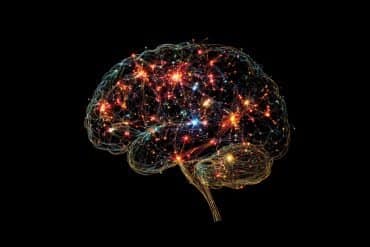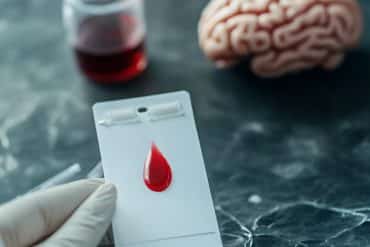Summary: A mother’s ability to regulate her response to trauma can significantly lessen PTSD symptoms in her children, particularly in high-stress regions. The research observed 131 mothers and young children in southern Israel, where security threats are prevalent, linking maternal self-regulation to reduced PTSD in children.
Children showed more PTSD symptoms when their mothers struggled with PTSD, but when mothers could mediate stressful events effectively, it buffered the impact on children’s mental health. By helping children interpret and cope with stress, mothers can foster resilience in challenging environments, underscoring the importance of parental support for childhood mental health.
Key Facts:
- Mothers’ PTSD symptoms are linked to elevated PTSD in children.
- Maternal self-regulation can buffer the impact of maternal PTSD on children.
- Effective mediation helps children interpret stress and builds resilience.
Source: Ben-Gurion University
Post-traumatic stress disorder (PTSD) is a mental disorder that develops following exposure to one or more traumatic events. It is characterized by symptoms such as avoidance, changes in cognition and mood, and alterations in arousal and reactivity.
A research group from Ben-Gurion University of the Negev investigated the link between these symptoms among families residing in the southern region of Israel and the mother’s calming role.
The research findings were published in the journal Stress and Health.
PTSD in children under the age of six can manifest through play, reenactment of traumatic themes or aspects related to the traumatic event and may also be expressed through anxiety-provoking dreams.
Previous studies have identified the regulatory function of the mother as having an impact on traumatic experiences. That function is to help her children organize their thoughts and actions.
For example, preparing breakfast, completing a task for school or work, allows children to see things from different perspectives, notice new details in their environment, and act accordingly.
In emergencies, this ability becomes even sharper, enabling mothers to keep their children safe and guide them to the safe room in real-time, allowing children to make better decisions in a changing and potentially threatening reality.
A research group led by Prof. Naama Atzaba-Poria, head of the Duet Center at Ben-Gurion University in the Negev, examined the connection between PTSD symptoms in parents and children and the mother’s regulatory function.
A successful regulatory function is characterized by the ability to delay reactions and reorganize according to a changing reality.
For example, if a child startles in panic because of a loud noise from a passing plane, and the mother notices and explains the cause to the child, she has demonstrated sensitivity and awareness of the child’s needs in a changing reality.
If, on the same morning, there were sirens in their area, and the changing reality becomes a security threat, this ability becomes even more critical.
Families living in southern Israel are exposed to varying levels of security threats, ranging from families residing in communities near Gaza (up to 20 km from the Gaza Strip) to more distant settlements in the southern part of the country (up to 40 km from the Gaza Strip).
The study was conducted among a sample that included 131 mothers and their firstborn children, aged 10–45 months (52% boys), as they approached the arrival of their second child (in the third trimester of pregnancy). Most parents were married, and most families experienced varying degrees of exposure to threats and missile fire, primarily in cities such as Beer-Sheva, Sderot, and Ashkelon.
The mothers completed computerized tasks to assess their executive functions, such as the ability to update working memory content or inhibit a dominant response that is irrelevant to the situation. Additionally, they filled out online questionnaires that focused on identifying symptoms of post-traumatic stress in both the mothers and the children.
The results indicated that children showed elevated levels of PTSD symptoms when their mothers experienced higher levels of PTSD symptoms. However, the mother’s ability to mediate the threatening situation significantly reduced the link between mother and child PTSD symptoms, buffering the potential influence that maternal mental health, in particular PTSD symptoms on child’s mental health, in the region under threat.
Furthermore, mothers may need to process information relevant to the child and the situation efficiently and rapidly (e.g., understanding the threat and quickly evacuating to a safe room), mediate the situation to the child, and regulate her own and the child’s emotions.
Therefore, the mother’s ability to effectively convey relevant information may contribute to her ability to respond appropriately to the child in critical moments and strengthen the child’s personal resilience.
The preoccupation with anxiety-provoking thoughts and worries can become more pronounced during and after such an event. Therefore, the ability to update the child and guide them may not only assist in better managing the stressful event itself but also alleviate prolonged avoidance of concerns related to exposure to security threats in the past and future.
Furthermore, the study suggested that mothers with high levels of self-regulation may be better able to separate their stress response from that of their children, thereby providing children with a sense of being seen and understood, which may reduce the risk of children developing post-traumatic stress later.
“It appears that the mother’s ability to efficiently monitor relevant information in her environment and delay impulsive reactions contributes to her ability to respond more reflectively, recognizing the needs of her children and enhancing their sense of security. Consequently, children may feel more protected and, therefore, be at a lower risk of developing PTSD symptoms,” explains Prof. Atzaba-Poria.
“In clinical practice and in daily life, these findings may be useful in identifying families that may require more support and assistance under complex security threats.”
The data collection took place from October 2018 to March 2020 (before the Iron Swords War). The results shed light on periods when heightened security threats increased the risk of post-traumatic stress disorder (PTSD), emphasizing the role of self-regulation in parents in preventing the development of PTSD symptoms.
The Duet Center continues to provide programs for parents in communities near the Gaza Strip, recognizing the importance of parental reflective functioning and the need to enhance parental responsiveness to cope better with uncertainty and emergencies, potentially preventing the development of PTSD symptoms.
The research team included Michal Levy, Dr. Tal Yatziv, Dr. Kinneret Levavi, Dr. Porat Yakov, Prof. Alison Pike, Prof. Kirby Deater-Deckard, Dr. Amnon Hadar, Dr. Guy Bar, Dr. Miron Froimovici, and Prof. Naama Atzaba-Poria.
About this PTSD and child trauma research news
Author: Naama Atzaba-Poria
Source: Ben-Gurion University
Contact: Naama Atzaba-Poria – Ben-Gurion University
Image: The image is credited to Neuroscience News
Original Research: Open access.
“The association between maternal and child posttraumatic stress symptoms among families living in southern Israel: The buffering role of maternal executive functions” by Naama Atzaba-Poria et al. Stress and Health
Abstract
The association between maternal and child posttraumatic stress symptoms among families living in southern Israel: The buffering role of maternal executive functions
Posttraumatic stress disorder is a prolonged stress and anxiety response that occurs after exposure to a traumatic event.
Research shows that both parental and child posttraumatic stress symptoms (PTSS) are correlated but parental executive functions (EFs) could buffer this link.
EFs refers to a group of high-level cognitive processes that enable self-regulation of thoughts and actions to achieve goal-directed behaviours and can be of importance for both positive parenting interactions and effective coping skills for PTSS.
Our study aimed to (1) examine the link between maternal and child PTSS and the moderating role of varying degrees of exposure to severe security threats context, and (2) to identify the moderating role of maternal EFs in this interaction, among families living in southern Israel.
Our sample included 131 mothers in their second pregnancy and their firstborn children. Mothers performed computerised tasks to assess their EFs and they reported on their own and their child’s PTSS.
Results revealed a positive correlation between maternal PTSS and child PTSS. However, the link between maternal and child PTSS was moderated by maternal working memory updating abilities and threat context severity.
Among mothers with lower updating capacities, the association between maternal and child symptoms was stronger under higher threat contexts; conversely, among mothers with higher maternal updating abilities, threat context did not modulate the link between maternal and child PTSS, suggesting a stress-buffering effect.
Our study contributes to the growing literature on the significant role of parental EFs in the context of parent-child interactions.







